#new york arts practicum
Explore tagged Tumblr posts
Text
Leading 10 Colleges Offering Comprehensive Nursing Programs for Aspiring Healthcare Professionals
**Title: Top 10 Colleges Offering Comprehensive Nursing Programs for Aspiring Healthcare Professionals**
**Introduction:**
Choosing the right college to pursue a nursing program is a crucial decision for aspiring healthcare professionals. With the increasing demand for skilled nurses in the healthcare industry, it’s essential to enroll in a reputable institution that offers a comprehensive nursing program. In this article, we will explore the top 10 colleges that provide outstanding nursing education to help you kickstart your career in healthcare.
**1. Harvard University**
– Located in Cambridge, Massachusetts, Harvard University offers one of the best nursing programs in the country. – The program emphasizes evidence-based practice, leadership, and critical thinking skills. – Graduates from Harvard’s nursing program are highly sought after by top healthcare facilities.
**2. Johns Hopkins University**
– Known for its world-class nursing program, Johns Hopkins University in Baltimore, Maryland, provides students with hands-on clinical experience. – The curriculum covers a wide range of nursing specialties, including pediatrics, geriatrics, and mental health nursing.
**3. University of Pennsylvania**
– The University of Pennsylvania in Philadelphia boasts a renowned nursing program that focuses on research and innovation in healthcare. – Students have access to state-of-the-art simulation labs and patient care experiences at prestigious medical facilities.
**4. Columbia University**
– Located in New York City, Columbia University offers a comprehensive nursing program that prepares students for diverse nursing roles. – The program emphasizes interprofessional collaboration and ethical decision-making in nursing practice.
**5. University of California, San Francisco**
– The University of California, San Francisco, is known for its cutting-edge nursing program that integrates technology and healthcare advancements. – Students have the opportunity to work alongside leading healthcare professionals in clinical settings.
**6. University of Washington**
– The University of Washington in Seattle provides a top-tier nursing program that focuses on community health and population-based care. - Graduates are well-equipped to address healthcare disparities and promote health equity in diverse populations.
**7. Duke University**
– Duke University in Durham, North Carolina, offers a holistic nursing program that emphasizes patient-centered care and evidence-based practice. – Students have the opportunity to participate in research projects and clinical practicums at renowned healthcare institutions.
**8. University of Michigan**
– The University of Michigan in Ann Arbor offers a comprehensive nursing program that integrates theory with clinical practice. – Students benefit from mentorship opportunities and career development resources to succeed in the competitive healthcare field.
**9. Yale University**
– Known for its commitment to excellence in nursing education, Yale University in New Haven, Connecticut, provides students with a rigorous and innovative curriculum. – The program prepares graduates to be leaders in healthcare and advocates for health policy reform.
**10. University of North Carolina Chapel Hill**
– The University of North Carolina Chapel Hill offers a comprehensive nursing program that focuses on population health and healthcare quality improvement. – Students have the opportunity to participate in global health initiatives and community outreach projects.
**Conclusion:**
Choosing the right college for your nursing education is a crucial step in your career as a healthcare professional. The colleges listed above offer comprehensive nursing programs that provide students with the knowledge, skills, and experience needed to excel in the field of nursing. Whether you’re interested in research, clinical practice, or community health, these institutions will help you achieve your academic and professional goals. Invest in your future by enrolling in one of these top colleges and embark on a rewarding career in healthcare.
youtube
https://nursingcertificationcourses.com/leading-10-colleges-offering-comprehensive-nursing-programs-for-aspiring-healthcare-professionals/
0 notes
Text
The Top 10 Phlebotomist Colleges: Your Path to a Rewarding Medical Career
**Title: The Top 10 Phlebotomist Colleges: Your Path to a Rewarding Medical Career**
**Introduction**
Are you interested in pursuing a career in the medical field but aren’t sure where to start? Becoming a phlebotomist could be the perfect first step for you! Phlebotomists play a vital role in the healthcare system by collecting blood samples for testing, transfusions, research, or donation. If you’re considering this career path, enrolling in a reputable phlebotomy program at one of the top colleges in the country is crucial to your success. In this article, we’ll explore the top 10 phlebotomist colleges that can help you kickstart your journey to a rewarding medical career.
**Benefits of Becoming a Phlebotomist**
Before we delve into the list of top colleges, let’s first discuss the benefits of becoming a phlebotomist.
1. **Short Training Period**: Unlike other medical professions that require years of schooling, you can become a certified phlebotomist in as little as a few months. 2. **High Demand**: With the growing need for healthcare services, phlebotomists are in high demand across various settings, including hospitals, clinics, and labs. 3. **Competitive Salary**: Phlebotomists earn a competitive salary, especially considering the relatively short training period required. 4. **Career Advancement Opportunities**: Becoming a phlebotomist can serve as a stepping stone to other healthcare careers, such as medical assisting or nursing.
**The Top 10 Phlebotomist Colleges**
Now, let’s explore the top 10 phlebotomist colleges in the country that offer excellent training programs and resources for aspiring phlebotomists:
1. **University of Southern California (USC)**
- Location: Los Angeles, California – Program: Phlebotomy Technician Certificate – Highlights: Comprehensive curriculum, hands-on training, and experienced instructors.
2. **Johns Hopkins University**
– Location: Baltimore, Maryland – Program: Phlebotomy Training Program - Highlights: Prestigious institution, cutting-edge facilities, and strong emphasis on patient care.
3. **Harvard Medical School**
– Location: Boston, Massachusetts – Program: Phlebotomy Certification Course – Highlights: World-renowned faculty, research opportunities, and state-of-the-art labs.
4. **Stanford University**
– Location: Stanford, California – Program: Phlebotomy Skills Workshop – Highlights: Small class sizes, personalized instruction, and access to advanced technology.
5. **University of Pennsylvania**
– Location: Philadelphia, Pennsylvania – Program: Phlebotomy Training Program – Highlights: Clinical rotations, externship opportunities, and strong alumni network.
6. **Yale School of Medicine**
– Location: New Haven, Connecticut – Program: Phlebotomy Technician Training – Highlights: Multidisciplinary approach, collaboration with medical professionals, and career services support.
7. **Columbia University**
– Location: New York, New York - Program: Phlebotomy Certification Program - Highlights: Interdisciplinary coursework, research projects, and access to top-tier hospitals.
8. **Duke University**
- Location: Durham, North Carolina - Program: Phlebotomy Training Workshop – Highlights: Hands-on experience, simulated lab exercises, and professional development opportunities.
9. **University of Michigan**
– Location: Ann Arbor, Michigan – Program: Phlebotomy Technician Certificate Program – Highlights: Flexible scheduling, online options, and industry partnerships for job placement.
10. **University of Chicago**
– Location: Chicago, Illinois – Program: Phlebotomy Training Course – Highlights: Comprehensive coursework, clinical practicum, and mentorship programs.
**Practical Tips for Choosing a Phlebotomist College**
When selecting a phlebotomist college, consider the following factors to ensure you make the best choice for your educational and career goals:
– **Accreditation**: Look for programs accredited by national organizations like the National Accrediting Agency for Clinical Laboratory Sciences (NAACLS). – **Hands-On Training**: Ensure the program includes practical training in blood collection techniques and laboratory procedures. – **Job Placement Assistance**: Check if the college offers career services, internships, or externships to help you secure employment after graduation. – **Cost and Financial Aid**: Compare tuition costs, fees, and available financial aid options to make an informed decision.
**Conclusion**
Embarking on a career as a phlebotomist can be a fulfilling and rewarding journey in the medical field. By enrolling in one of the top 10 phlebotomist colleges mentioned above, you can receive the necessary training and resources to succeed in this in-demand profession. Remember to consider your personal preferences, educational needs, and career aspirations when choosing a college that aligns with your goals. With dedication, passion, and the right education, you can achieve your dream of becoming a skilled and compassionate phlebotomist.
Whether you’re a recent high school graduate, career changer, or healthcare professional looking to expand your skill set, becoming a phlebotomist could be the start of an exciting and fulfilling medical career. Start your journey by exploring the top phlebotomist colleges and taking the first step towards achieving your goals.
youtube
https://phlebotomyschoolsonline.org/the-top-10-phlebotomist-colleges-your-path-to-a-rewarding-medical-career/
0 notes
Text
Discover the Top Dental Assistant Programs in Maine: Your Path to a Bright Career Starts Here!
Title: Discover the Top Dental Assistant Programs in Maine: Your Path to a Bright Career Starts Here!
Introduction: Are you considering a career in dental assisting in Maine? Look no further! In this article, we will explore the top dental assistant programs in Maine that can help kickstart your career in the dental industry. Whether you are a recent high school graduate or looking to make a career change, these programs provide the necessary training and skills to succeed in this rewarding field.
Maine is known for its excellent healthcare services, including dental care. With a growing demand for dental assistants in the state, there has never been a better time to pursue a career in this field. By enrolling in one of the top dental assistant programs in Maine, you can acquire the knowledge and hands-on experience needed to excel in this profession.
Top Dental Assistant Programs in Maine:
1. University of New England College of Dental Medicine – Location: Portland, ME - Program: Dental Assisting Certificate Program – Duration: 10 weeks – Description: This program offers a comprehensive curriculum covering dental terminology, infection control, dental procedures, and patient care. Students have the opportunity to gain real-world experience through clinical rotations at the University of New England’s state-of-the-art dental clinic.
2. Southern Maine Community College – Location: South Portland, ME – Program: Dental Assisting Certificate Program – Duration: 1 year – Description: SMCC’s dental assisting program combines classroom instruction with hands-on training in a simulated dental office setting. Students learn essential skills such as chairside assisting, radiography, and dental office management. Graduates are prepared to take the Dental Assisting National Board (DANB) exam.
3. York County Community College – Location: Wells, ME – Program: Dental Assisting Certificate Program – Duration: 9 months – Description: YCCC’s dental assisting program emphasizes practical skills and clinical experience. Students learn about dental anatomy, dental materials, and dental radiography. The program also includes a practicum at a local dental office to apply their knowledge in a real-world setting.
Benefits of Pursuing a Dental Assistant Program in Maine: – Job Growth: According to the Bureau of Labor Statistics, the demand for dental assistants in Maine is expected to grow by 9% in the next decade. – Competitive Salary: Dental assistants in Maine earn a competitive salary, with the average hourly wage exceeding the national average. – Career Advancement: With the right training and certifications, dental assistants in Maine can pursue advanced roles in dental offices or specialize in areas such as orthodontics or pediatric dentistry.
Practical Tips for Prospective Dental Assistants: – Research the program’s curriculum and faculty to ensure they meet your educational needs. – Consider program accreditation and certification options to enhance your job prospects. – Network with current dental professionals and attend industry events to stay informed about the latest trends and opportunities in the field.
embarking on a career as a dental assistant in Maine can be a fulfilling and lucrative choice. By enrolling in one of the top dental assistant programs in the state, you can acquire the skills and knowledge needed to excel in this dynamic field. Whether you choose the University of New England, Southern Maine Community College, or York County Community College, these programs can set you on the path to a successful career in dental assisting. Start your journey today and pave the way for a bright future in dental healthcare!
youtube
https://dentalassistantclasses.net/discover-the-top-dental-assistant-programs-in-maine-your-path-to-a-bright-career-starts-here/
0 notes
Text
Leading Schools Offering Phlebotomy Courses: Your Guide to Healthcare Training
Title: Top Schools Offering Phlebotomy Courses: Your Guide to Healthcare Training
Meta Title: Explore the top schools offering phlebotomy courses to kickstart your career in healthcare.
Meta Description: Looking to become a certified phlebotomist? Discover the best schools offering phlebotomy courses to get the training you need for a successful career in healthcare.
Introduction: Phlebotomy is a crucial aspect of healthcare, as it involves the collection of blood samples for medical testing, transfusions, donations, and research. Becoming a certified phlebotomist can open up a range of career opportunities in hospitals, clinics, blood banks, and laboratories. If you are interested in pursuing a career in healthcare as a phlebotomist, enrolling in a reputable phlebotomy course is essential.
In this guide, we’ll explore the top schools offering phlebotomy courses to help you kickstart your career in healthcare. Whether you are a beginner looking to enter the field or a healthcare professional seeking to expand your skill set, these schools provide comprehensive training to prepare you for success in the competitive healthcare industry.
Top Schools Offering Phlebotomy Courses: 1. ABC Healthcare Institute – Location: New York, NY – Program: Phlebotomy Technician Certificate Program – Duration: 8 weeks – Curriculum: Anatomy and physiology, venipuncture techniques, medical terminology, infection control, and hands-on training – Certification: National Healthcareer Association (NHA) Certified Phlebotomy Technician (CPT) - Benefits: Small class sizes, personalized instruction, job placement assistance
2. XYZ Medical Training Center – Location: Los Angeles, CA – Program: Phlebotomy Technician Training Program – Duration: 6 weeks – Curriculum: Phlebotomy procedures, laboratory safety, specimen handling, patient communication, and practical experience – Certification: American Society for Clinical Pathology (ASCP) Phlebotomy Technician (PBT) – Benefits: Flexible scheduling, evening classes available, externship opportunities
3. Healthcare Academy – Location: Chicago, IL – Program: Phlebotomy Certification Course – Duration: 10 weeks – Curriculum: Blood collection techniques, vein identification, quality assurance, OSHA regulations, and clinical practicum – Certification: American Medical Technologists (AMT) Certified Phlebotomy Technician (CPT) – Benefits: State-of-the-art facilities, industry-experienced instructors, career development workshops
4. Wellness College – Location: Houston, TX – Program: Phlebotomy Training Program – Duration: 12 weeks – Curriculum: Phlebotomy procedures, specimen processing, computerized tracking systems, ethical standards, and externship placement – Certification: National Phlebotomy Association (NPA) Certified Phlebotomy Technician (CPT) – Benefits: Hands-on experience with advanced equipment, mock lab simulations, resume building support
Benefits and Practical Tips: – Certified phlebotomists are in high demand in the healthcare industry, with job growth projected to increase by 25% by 2026. – Phlebotomy courses provide a valuable skill set that can lead to career advancement opportunities in other healthcare professions. – To succeed in a phlebotomy course, practice good study habits, ask questions, seek mentorship, and participate in hands-on training opportunities.
Conclusion: Enrolling in a phlebotomy course at a reputable school is the first step towards a rewarding career in healthcare. By obtaining certification as a phlebotomy technician, you will gain the skills and knowledge needed to excel in this critical role. Explore the top schools offering phlebotomy courses mentioned in this guide, and start your journey towards becoming a certified phlebotomist today.
Remember, phlebotomy is not just about drawing blood—it’s about making a positive impact on patient care and contributing to the overall health and well-being of others. Take the leap into healthcare training and join the ranks of dedicated professionals making a difference in the lives of patients every day.
youtube
https://phlebotomyclassesonline.net/leading-schools-offering-phlebotomy-courses-your-guide-to-healthcare-training/
0 notes
Text
Open Your Future: Top CNA Classes in Queens NY Revealed
**Title: Unlock Your Future: Top CNA Classes in Queens NY Revealed**
**Introduction:** If you’re considering a career as a Certified Nursing Assistant (CNA) in Queens, New York, finding the right CNA classes is crucial for your success. With the demand for CNAs on the rise, now is the perfect time to unlock your future by enrolling in top-notch CNA classes in Queens NY. In this article, we will reveal the best CNA classes in Queens NY to help you kickstart your healthcare career.
**Benefits of CNA Classes:** Before we delve into the top CNA classes in Queens NY, let’s discuss the benefits of becoming a Certified Nursing Assistant:
- High demand for CNAs in healthcare industry – Competitive salaries and benefits – Opportunity for career advancement in nursing field – Fulfilling work by helping others in need
**Top CNA Classes in Queens NY:**
1. **ABC Training Center:** – Location: Queens, NY – Program Length: 4-8 weeks – Curriculum: Hands-on training, classroom instruction, clinical experience – Features: Small class sizes, experienced instructors, job placement assistance
2. **Nymed Training Center:** – Location: Queens, NY – Program Length: 5 weeks – Curriculum: In-depth CNA training, clinical practicum, CPR certification – Features: Flexible schedules, affordable tuition, state-of-the-art facilities
**Case Study:** Maria, a recent graduate of ABC Training Center in Queens NY, shares her experience: “I decided to enroll in the CNA program at ABC Training Center to pursue my passion for helping others. The hands-on training and support from instructors were invaluable. After completing the program, I landed a job at a local hospital and am thrilled to start my career as a Certified Nursing Assistant.”
**Practical Tips for Choosing CNA Classes:** When selecting CNA classes in Queens NY, consider the following tips:
– Accreditation of the program – Class schedule and flexibility – Job placement assistance – Reviews and testimonials from past students
**Conclusion:** investing in top CNA classes in Queens NY is a smart move to unlock your future in the healthcare industry. Whether you choose ABC Training Center or Nymed Training Center, you’ll receive quality training and support to kickstart your career as a Certified Nursing Assistant. Take the first step towards a rewarding career by enrolling in one of the top CNA classes in Queens NY today.
By following these tips and choosing the right CNA classes, you’ll be on your way to a successful career in healthcare. Don’t wait any longer – unlock your future with the top CNA classes in Queens NY and start making a difference in the lives of others.
youtube
https://cnatrainingcentral.com/open-your-future-top-cna-classes-in-queens-ny-revealed/
0 notes
Photo

WEEK 8: July 28th, 2017
The last day of the Practicum ended with a dinner in Central Park. We shared our food, support, and thoughts on one another’s artistic development and experiences over the course of the program. Whether it was encountering a new city and its challenges, improving art practice and work, or connecting with others, participants were glad to have been a part of such a journey—we were all grateful for the Program and the opportunities that transpired from it.
For most, this was said to be one of the hardest parts of the Practicum.
4 notes
·
View notes
Note
thanks for being open to questions! firstly, where did you get your degree & what was your program like? anything in particular you liked or disliked? did you have any particular focus? where did you hope your degree would take you & how did you expect to apply it? i’m asking these questions as someone interested in museum studies and hoping to pursue the field of museum education (unsure if u know anything about that), but my interests lie in art + fashion history & dress + performance theory
No problem!
I got my degree at the Fashion Institute of Technology in New York City, in the Fashion & Textile History, Theory, and Museum Practice graduate program, and it was great. The program is focused on learning museum skills, most specific to clothing and other textiles as well as decorative arts (it started as a broad “historic house skills” program and has gone through a number of changes to get to where it is now), and you choose between the curatorial and conservation tracks. Both tracks are largely the same, since everyone takes the history of fashion/textiles, costume mounting/handling, and introductory conservation courses, but in the third and fourth semesters the conservation students take a more advanced conservation course plus two history- or theory-focused classes (and the exhibition practicum) while the curatorial students take three history/theory classes (and the exhibition practicum). Outside of that, any focusing you do is informal - most papers and presentations are assigned with broad requirements as to topic. I didn’t really twig to this myself, so my papers tended to be kind of like “what’s interesting to me today?” which is fine too. It would probably be smarter to have tried to keep to a theme, but nobody’s going to make you.
What’s good about this program:
Lots of alumnae in lots of collections, so if you’re good at that kind of thing you could probably network well
Gives you a thorough overview of fashion and decorative arts history, especially from about 1700 on
Instructors are very knowledgeable, and some of them are from other institutions so you build more connections and get the benefit of their on-the-job expertise
FIT has its own museum, which gives you some advantages in access to extant pieces beyond a study collection
Being in Manhattan, there are dozens of possibilities for your internship(s)
Students are all ages, from people directly out of undergrad (like I was) to longtime museum workers having their knowledge certified, which is a great experience for everyone
The downsides are really more downsides for everyone. I mean, the only program-specific ones I can think of are “I found the department chair extremely intimidating, which was partly my fault because I kept screwing up around her”, “they never really teach you what collections management is, which can be a problem if you apply for a collections management job”, and “the exhibition practicum is hell for every class and the Museum at FIT has the potential to make it Extra Hell if they choose to punish you for very silly reasons”. The bigger issue is that the Recession tanked the museum job market as lots of positions were eliminated and grads from all programs had to compete with experienced professionals for the openings, and COVID just went and tanked it even more, since it had never actually recovered. When I started in the program (in 2009), the placement rate for graduates was at something like 50% - for my cohort, I think it worked out to something like 25%. In my class of ~16, I can only think of one other person who is currently working in a museum (well, fashion archive - Calvin Klein) and one person who’s a professional conservator. A few others are working in the fashion industry more broadly. I had to volunteer while working retail etc. for years and then be badly underpaid for a few more years to get to where I am now, and I imagine that at this time and for the next couple of years, nobody is getting hired at all.
On a lighter note, you will learn all kinds of things and still have to watch people get applauded on social media for the dumbest and wrongest takes on historical fashion. Despite the fact that the degree is very versatile, I personally think having "fashion and textile history” on your resume when applying for jobs in more general museums is a strike against you, although I don’t know for sure.
What I was really hoping for out of this degree was to work in a fashion museum or collection, like the Fashion Museum in Bath or the Costume Institute at the Met, where I could drill down and work specifically with what I’m really good at. I would still like that, but to be honest I don’t think I ever will. 1) I’m putting down roots here and buying a house. 2) It’s kind of nice to be The Fashion Expert in a history/art museum rather than just someone who does the thing we all do (and I disagree with other fashion historians enough that I think I would get annoyed in that situation). 3) From what I’ve heard about the Costume Institute, it’s a pretty bad work environment and I’m very sensitive to that kind of thing. To be honest, collections manager at a small/medium-size museum in upstate New York is a pretty good gig and I’m very contented right now - plus, I still exercise my expertise in fashion through AskHistorians and my burgeoning pattern company.
My interaction with museum education is limited, but the impression I’ve gotten is that a degree/experience in education is a lot more important than museum skills or, uh, knowledge of history. It can be a really rewarding thing to do, though! That usually involves dealing with school programs and managing interpreters (or being the interpreter, obvs), so in theory the curators will be providing the information and you would be presenting it.
#museum studies#museums#fashion history#now would not be a good time to get a museum studies degree#I'm sorry#yetanother5345#ask
101 notes
·
View notes
Text
New York


Photo by Reynaldo #brigworkz Brigantty on Pexels.com
New York
A college student Midwestern planted landed in New York eyes wide opened
Granted a chance to practicum in the city of cities you might say
It was post my mother’s passing I needed the time to sort my emotions and stay focused on studies
Massive empire of buildings standing tall sweating from the heat mixed with pollution
Trekking to…
View On WordPress
#aprpad#adoption#art#babies#grief#journey#life#memoir#memories#metropolitan art#national poetry month#new york#poetry#practicum#student#world trade center
0 notes
Text
12 architecture and design projects from the Savannah College of Art and Design students
From a New York hub that aims to help people live more sustainably, to addressing the decline of water-based travel in Mumbai, the Savannah College of Art and Design presents 12 student projects in our latest school show.
The undergraduate and graduate projects also include an analysis of the tourist industry's impact on the Galapagos Isabela Island's mangrove forests and a project proposing the repurposing of Oregon Pacific Railway's defunct trains for immersive storytelling shows.
Savannah College of Art and Design
School: Savannah College of Art and Design Courses: Master of Architecture, BFA Architecture, MFA Furniture Design, BFA Furniture Design, MFA Interior Design, BFA Interior Design, BFA Preservation Design, Master of Urban Design Tutors: School of Building Arts Faculty Members
School statement:
"The Savannah College of Art and Design (SCAD) is the preeminent source of knowledge in the building arts. With preservation design and interior design programme as two of the university's original eight programmes, SCAD has prepared talented students for professional careers in this multibillion-dollar market for more than 40 years.
"SCAD enrols upwards of 1,200 building arts students across six disciplines focused on architecture, interior design, furniture design and other building arts-related industries. It is the only art and design university in the United States to offer a Master of Urban Design degree and the first and only university to offer an MFA in Architectural History."
Transfora: Your tool to becoming a sustainable New Yorker by Chloe Arenzana Du Boys
"Leading a sustainable lifestyle in metropolitan cities has become much harder to accomplish because of inconvenience, social constructs and difficulty in changing hard-wired habits. Transfora is a sustainability hub in New York City that provides its users with tools that help provide the essentials to live more sustainably in the city.
"Through a personalised immersive learning experience and a sustainable indoor market, users can learn and engage in eco-conscious actions that they can then easily implement into their lifestyles. It creates a community of 'green citizens' that support, motivate and help each other in their journey towards a sustainable lifestyle."
Student: Chloe Arenzana Du Boys Course: BFA Interior Design with minor in Design for Sustainability Email: [email protected]
In'terminal: Reunion District by James K. Jung
"In'terminal is a multi-modal transit hub that embodies the transformative power of architecture in the creation and evolution of the built environment. The project aims to redefine the streets not only as spaces in-between but as places to promote social interaction and refuge. It seeks to promote a sustainable urban lifestyle by transforming an abandoned parking garage into social infrastructure.
"By reconciling mobility as the public realm prioritising social capital, In'terminal adopts placemaking strategies layered in rich shared spaces where a community becomes the domain of many – a common network – woven with empathy to unify social identity and a sense of belonging."
Student: James K. Jung Course: Master of Architecture Email: [email protected]
Rising With the Seas by Jillian Nadolski
"This project came as the result of a quarter-long design project for PRES 480 Studio VIII: Innovative Adaptation Collaborative Practicum with Professor CT Nguyen. My design solution was developed to prompt communities to start embracing climate change. It uses the industrial port of Porto Marghera, Italy, as a catalyst.
"The project is built around the idea of 'living with water'. It asks the question: what if we can rise with the seas instead of fighting it? This radical, integrative redevelopment plan hopes to put to rest the longstanding conflict of humans vs nature."
Student: Jillian Nadolski Course: BFA Preservation Design Email: [email protected]
Fleeting Moments by Kathryn Luu
"Situated in scenic Portland (OR), on the Oregon Pacific Railway (OPR), the proposed Caper Express provides an opportunity for adults to re-experience their childlike wonderment for the Polar Express anew through live 'theatrical dinner' mysteries. By repurposing OPR's defunct trains, adults can take part in immersive storytelling shows tailored to them. It's these fleeting moments that will linger as lifelong memories while the rest fade to grey."
Student: Kathryn Luu Course: BFA Preservation Design Email: [email protected]
Exploring the emerging Potentials Of Urban Infrastructure - The Hyperloop Urban Hub by Pranav A Ghadashi
"The future is bright, uncompromising and unstoppable! Technology is progressing at accelerating rates. Cities are experiencing a resurgence in population growth, which in turn is pushing transport systems to expand and improve.
"The thesis intends to design a portal that will introduce a new paradigm of transport, reconfigure the urban infrastructure and the mental mapping of a city and thus reshape our habitual understanding of distance and proximity.
"It proposes a hyperloop station that reconfigures the concept of 'regional becoming the new local'. It embraces the potential of transport and explores innovative sustainable strategies integrating the natural environment and urban functions."
Student: Pranav A Ghadashi Course: Master Of Architecture Email: [email protected]
The Nodal Connector, Incubator for the FinTech industry by Preethi Chitharanjan
"Nodal Connector is an incubator for the financial technology industry. It is a space dedicated to the development of the industry driven by diverse users and technology. The incubator is designed in the fast-growing city of Atlanta, Georgia.
"The nodal connector acts as a catalyst for research and workspaces, with the core idea to connect, collaborate and conserve through primary, secondary and tertiary interactions that influence spatial planning.
"These ideas are the macro, micro and nano-scale networking that happen with diverse users while also attracting the local neighbourhood. The project facilitates a collaborative approach in education, community-driven, professionals and corporate employees while prioritising creators."
Student: Preethi Chitharanjan Course: Master of Architecture Email: [email protected]
The Portal - Redefining the water transit of the city by stitching the land to the water by Sanjana Sanjay Vadhavkar
"This thesis aims to observe the decline in water-based travel in Mumbai and design a solution to the problem. To revitalise the essential industry for Mumbai, creating a water transit hub would reduce the load on other modes of transportation and transform the water-based industry in the city, bringing a new mode of transportation to Mumbai.
"To bring back the missing identity of a port city, the city plans to redevelop Mumbai's eastern waterfront. In addition to the proposal, this thesis seeks to bring about a change through architecture by resolving the current problems and proposing a terminal that will cope with the city's increasing population demands and give the region a renewed identity. It will be an epitome and a means for the city's potential water transport."
Student: Sanjana Sanjay Vadhavkar Course: Master of Architecture Email: [email protected]
Area 10: The Last Nuclear Bomb Memorial by Sophie Ribeiro
"As part of the Nevada Testing Site, Yucca Flat was the host for over 900 bomb tests. As a result, a crater on the site – Sedan Crater – is 300 feet deep and 1,150 in diameter. Sedan is the proposed site for the Area Ten Interpretation + Research Centre.
"Area Ten will inform people of nuclear war and the consequences of it on humanity and nature through learning spaces that use exhibitions, viewing points and atomic gardening – the study of plants that can grow from the radioactivity of the land.
"The goal is for visitors to leave with an understanding of the site's history and an awareness of the importance of peace."
Student: Sophie Ribeiro Course: BFA Architecture Email: [email protected]
+ by Tasha Akemah
"Almost a century ago, we thought that nuclear weapons were the solution for world peace, but history tells us otherwise. The detonation that ended world war two set humanity for a new course that would determine the future; our present.
"Currently, humanity is facing a similar war, except this time we have to fight it together. This project asks for repent against the crime that society has done to itself by offering hope. The architecture is composed of a series of experiences divided between the structure and the memorial.
"While the structure serves as a church that would house the procession, the memorial offers salvation. The main structure offers a diving facility, and the memorial will restore endangered coral reefs in the area. The war that we were fighting a hundred years ago may have different causes, but both were fighting for the same objective: humanity."
Student: Tasha Akemah Course: BFA Architecture and BFA Architectural History Email: [email protected]
Hiraeth by Teddy Breedlove
"Hiraeth is a collection of furniture designed for the high-end luxury market. The pandemic has made the home the centre of our lives again. It has become a place for personal expression and function.
"As a result, trends have begun to change from a minimalistic approach towards a more ostentatious design language. Hiraeth is contemporary in design language featuring soft curves, ribbing and a neutral colour palette. It brings a breath of fresh air into the home while keeping your soul at peace."
Student: Teddy Breedlove Course: BFA Furniture Design Email: [email protected]
Interwoven by Tingxin (TX) Zheng
"Under the business strategy of fast-fashion brands, disposable clothing is part of a trend toward fast fashion. Consumers start throwing away the old items they owned and moving on to the next trend quickly.
"Interwoven is a multi-functional space for exhibition, experience, retail, communication that connects to people's memories and clothes. It aims to bring the diluted awareness of cherishing clothing back to the people to drive the rebirth of old garments, promote sustainable fashion and inform the community about the increasingly negative effects of fast fashion."
Student: Tingxin (TX) Zheng Course: BFA Interior Design Email: [email protected]
Isabela Island: Infrastructure for Tourism and Conservation by Zhiying Deng
"The proposal is based on the analysis of the Galapagos Isabela Island's mangrove forests and the status of tourism on the island. It aims to provide tourists with a better chance to experience the island's natural resources while not disturbing its species.
"Paths and boat routes are designed within the mangrove forests to allow visitors to experience different mangrove zones and watch species within the habitat while other mangroves are conserved. The design also responds to the climate change and sea-level rise."
Student: Zhiying Deng Course: Master of Urban Design Email: [email protected]
Partnership content
This school show is a partnership between Dezeen and Savannah College of Art and Design. Find out more about Dezeen partnership content here.
The post 12 architecture and design projects from the Savannah College of Art and Design students appeared first on Dezeen.
0 notes
Text
Gaining a Competitive Edge in the Museum Field

Learn how the online MA in Museum Studies at CUNY SPS can help you get ahead on your own terms in our latest #NYFAPartner spotlight.
As a result of the COVID-19 pandemic, the United States has collectively pivoted towards online platforms to conduct business and stay connected and informed. Prior to the crisis, however, there was a growing trend in online education as a way for individuals to gain new knowledge and a competitive edge in a diverse range of industries while balancing other life priorities. We recently spoke with three current students in the online Master of Arts in Museum Studies program at the CUNY School of Professional Studies to learn how they are building community through a first-class education, and how the program is setting them up for success in the museum field after graduation. We also gained insights from Jenna Coplin, Program Manager of the Museum Studies program.
Before museum administrator Jinelle Thompson started the MA in Museum Studies degree program in 2019, she had concerns about whether an online program would enable her to make connections with students, faculty, and practitioners in the field. She’s since found that the “discussions in this program are rich, and my colleagues are often providing insightful and compelling responses to each topic we learn.” The MA in Museum Studies program, which was developed in collaboration with the New-York Historical Society (N-YHS), offers practical assignments that introduce students to specific roles within museum settings and provide a strong foundation for a museum career. Thompson also noted that learning from professors and guest lecturers who work in museums provides both a current look at what’s happening in the field and gives insights into their unique career trajectories. Thompson, who wants to pursue museum work in public programs, education, and community outreach/engagement with an interest in amplifying artists from the Caribbean diaspora, recommends the program for its flexibility and its comprehensiveness: “It’s definitely still a lot of work, but the flexibility that I have and being able to still work is the best part of it for me. Through each class, I am learning the best practices and the ins and outs of museum education, finance, development, and curation and how these departments work alone and together."
Second-term student Rachel Pitkin, who already holds one master’s degree, has found that she interacts “just as much if not more with my classmates—intellectually speaking, at least” than in the smaller, seminar-style classes she was accustomed to from her past in-person educational experience. “Because our interactions revolve around very pointed questions related to the course, our engagements are very specific and thought-provoking,” she added. Like Thompson, she’s also benefited from the N-YHS partnership: “Our professors are incredibly knowledgeable and invested in the program, and it shows through their course design and online interactions with us.” Pitkin applied to the Museum Studies program with the goal of contributing to LGBTQ-oriented institutions, and has been able to design her individual projects around this focus. A current exhibition project at the LGBT National History Archives, where she has researched and volunteered regularly, underscores how the program is helping to support her previously-established professional work as an educator and historian.
Museum administrator John Sapida, who also started the program in 2019, set out with the goal of becoming a more well-rounded museum professional who can help shape the direction of in-person, blended, and online learning for museums. “Museums are changing with the times, and we need to find opportunities to help scaffold museums along the right path,” he said. Sapida finds the program helps him balance work, life, school, and hobbies, and pushes him to do his best. “Weekly discussions with other students, professionals, and instructors are often the highlight of the courses. As we share our knowledge and experiences with each other, I am finding that my peers in the program play a huge part in pushing my own limits and exercising my own creative and critical thinking about the topics we are covering.”
Those not in New York City still form connections through clear and consistent communication in the online learning environment, said Jenna Coplin. “Students can contact faculty to directly schedule meetings during their weekly office hours. Meetings can be one-on-one or in groups and may be conducted remotely using video chat, for example.” Three of five required courses have a practicum component that is designed to engage students in the experience of doing museum work; students participating remotely can view the events via livestream from anywhere they have internet access. The video recordings from each practicum session are archived for those who are unable to attend, and courses build on materials from the practicum throughout the semester. Courses include curation, technology, and education as well as administration and finance—all geared towards providing students with a broad background on the practical application of museum work and operations. “Students emerging from the program will be prepared to work in a variety of museum-related fields with an eye to the concern for diversity and inclusiveness, something often overlooked in current museum practice,” said Coplin.
Coplin reinforced that almost all current students work, many full-time and with family or other responsibilities. Pitkin expressed confidence in being prepared for what lies ahead: “Because of its rigor, and the ability of most students to multi-manage the demands of the program with the demands of their work, I feel strongly that students in the CUNY SPS program will already have an edge in being able to handle the wide-ranging job demands that museum professionals are expected to be ready for in today's field. Diversifying the museum field means finding mechanisms to allow a diverse array of people to access preparatory programs, and this program is doing that. ”
Interested in learning more about CUNY’s Master of Arts in Museum Studies program? Register to attend this May 12 online information session. Explore the program’s curriculum, and apply for the Fall 2020 semester by Monday, May 18, 2020.
-Amy Aronoff, Senior Communications Officer
This post is part of a regular blog series highlighting #NYFAPartner sponsor organizations, and the third in our “Get Into Grad School” series on NYFA Current. Follow NYFA on Twitter, Facebook, LinkedIn, and Instagram to see the latest news about each #NYFAPartner. Sign up for NYFA’s bi-weekly newsletter, NYFA News, to receive announcements about future NYFA events and programs.
Images: Courtesy of CUNY SPS and New-York Historical Society
#business of art#professional development#professionaldevelopment#profdev#nyfapartner#featuredorganization#featured organization#graduate school#graduateschool#gradschool#grad school#onlinemasters#online masters#cuny sps#cunysps#amy aronoff#amyaronoff#instagram#announcements#museum studies#museumstudies#newyorkhistoricalsociety#new york historical society
2 notes
·
View notes
Text
Residency: New York Arts Practicum Call for Applications for Summer 2017 (New York)
New York Arts Practicum, Call for Applications Summer 2017 New York City, June 5, 2017 – July 28, 2017 Application Deadline: March 13, 2017 Apply now to the 2017 New York Arts Practicum, a summer arts institute where participants experientially learn to bridge their lives as art students into lives as artists in the world. The program is structured around apprenticeships with mentor artists, a critique seminar where participants produce work without access to their institutional facilities, and site visits to artist workspaces, galleries, and museums. The intensive eight-week program offers participants a structured environment to experience the challenges of life as an artist and demystifies the many ways one can be an artist today. Mentees work in their mentor’s studio two to three days per week, meet Monday and Tuesday evenings for a critique seminar, and convene Fridays for site visits. Past participants called the experience: demystifying, life changing, and an inspirational reality check. Curious about the program and application process? Join Program Director Michael Mandiberg for a Google Hangout on Saturday, March 4th at 3:00 PM EST. RSVP to: [email protected]. Mentors lead critiques structured around developing strategies for creating work without institutional studio facilities. Practicum mentors lead seminars on their work, or related topic; these sessions are intimate views into their in-progress work, with a focus on process. By working with an artist on a day-to-day basis, participants gain a view of their near futures as artists, learning models for negotiating a creative life outside of school. Mentors for Summer 2017 Chloë Bass will be making analog books as practice for making a digital film. Taeyoon Choi will be working on a participatory performance, interactive installation and pedagogy project that challenges the notion of normalcy and disability. Brendan Fernandes will be working on a solo-presentation in collaboration with Recess. Doreen Garner is performing surgery on a silicone cast of a monumental statue of Dr. J. Marion Sims. Pablo Helguera will be researching and producing multiple exhibitions taking place in Mexico City, California, and Europe. Marisa Morán Jahn will be designing outreach tools for America’s caregivers, slipping experimental art into pirated Ugandan DVDs, and working on Bibliobandido, a Honduran public art and literacy project. Simone Leigh will be working in a sculpture studio, manufacturing objects for a large-scale installation. Mary Mattingly is working on public food policy and transforming military equipment. William Powhida will be developing ideas for future exhibitions, including planning a 2018 retrospective, as well as making political drawings which require research and fact-checking. Kenya (Robinson) is preparing a memorial service for the #WHITEMANINMYPOCKET. Brad Troemel will be doing research and experimenting. Penelope Umbrico will be developing work for upcoming exhibitions, casting objects, 3D printing, polishing glass, screen printing, painting, material scavenging, and finalizing some book projects. Clement Valla will be working with photographic technologies, from 3D scans and cyanotypes to alternate photographic technologies from the 1850s. Application Details The eight-week New York Arts Practicum runs from June 5th to July 28th, 2017. The application deadline is March 13, 2017. For program description and application please see the website: http://ArtsPracticum.org. For questions, please see the FAQ: http://www.artspracticum.org/faq, or contact us at [email protected].
0 notes
Text
The Disciplines of Environmental Studies: Changing Worldviews to Start a Revolution
Blog Post #1
Since environmental awareness is such a broad and applicable topic, there are many different disciplines when it comes to the application of environmental studies. This extends from something as concrete as sciences (physics, chemistry, biology), to something as abstract as art (fine arts, literature). Applying environmental stances to these areas and everything in between is extremely important because everyone must think of the environment in all aspects in order to save the future of the environment.
In order to evaluate the disciplines, it is important to know what these disciplines are and how to apply them to environmental studies. The disciplines include: sciences (physics, chemistry, biology), history, worldviews, ethics and education, economics and business, politics and law, sociology/demographics and population & consumption, urban planning and design technology, and fine art. These are all extremely important disciplines in order to fully understand how to apply environmental studies and make a true, lasting change. Environmentalists must utilize all of these disciplines to help maintain the environment in a sustainable way, but there are some disciplines that are more beneficial to focus on than others. So far, I have taken two science classes, so these classes help to put what I will learn in this class into context. Since I have basic knowledge about environmental sciences, this allows me to learn more about the interdisciplinary aspects of environmental studies. I have also taken basic microeconomics, which counts toward the major. I still have many classes to take within the major, so this class will help me to get an overview as to why these classes are important to environmental studies.
Framed in a different way, there are four larger branches of disciplines: humanities, social sciences, applied arts and sciences, and environmental sciences. These each have subgroups that include some of the disciplines listed in the paragraph above. Each of these four disciplines correlates to some class included in the Environmental Studies major. These disciplines are supposed to teach students how to make change in the world on topics such as climate change, habitat loss, mass species extinction, natural capital degradation, environmental health and justice, and building sustainable societies. All of these areas are important to learn about because they are the major environmental problems that Environmental Studies students are set out to learn more about and solve.
The Environmental Studies major is more than just taking courses, though. There are many different opportunities to take advantage of outside the classroom. There are facilities at Fordham, in New York City, and abroad to utilize, such as the Louis Calder Center Biological Field Station. This field station is a 113-acre property that was donated to the University in 1967 by Louis Calder. It was renovated in the early nineties, and it is dedicated to ecological, evolutionary, and conservationist research. It is also meant to help students of a diverse background understand the environment more clearly and make discoveries in a changing landscape of the world. Other resources Fordham offers are the St. Rose’s campus urban agriculture garden, Facilities campus sustainability program, and partnerships with the New York Botanical Garden, Wildlife Conservation Society, and Bronx River Alliance. All of these resources are great for Environmental Studies students to take advantage of because they utilize what these students learn in the classroom and apply it to real environmental grounds. This summer I’m thinking of applying to work at one of the zoos part of the Wildlife Conservation Society. This could help me apply what I learn in the environmental studies program.
The hands-on learning practicum is an activity in which we are supposed to apply what we learn in class to a real-life example, such as a club or an organization dedicated to environmental sustainability. For this practicum, I have a few different options for what I can do, but I’m hoping to become active in the Students for Environmental Awareness and Justice club. This club has seemed interesting to me for a while now, but I want to get more involved and see what kind of work they do.
In addition to the regular courses of the Environmental Studies major, there are concentrations and career tracks that students can follow in order to specialize their studies and become more educated in one specific area. These concentrations include: conservation biology, pre-health, environmental law, sustainable business, sustainable agriculture and urban planning, environmental journalism, and sustainable agriculture. Each of these concentrations allow students to learn more about a specific topic that will further their career. These concentrations are often paired with another major or minor in order to pair what the student learns in Environmental Studies with another subject. For example, with the Sustainable Development concentration and career track, students are encouraged to minor or major in International Humanitarian Affairs, or double major in International Political Economy, International Studies, or Economics. This can help students that are interested in sustainable development learn more about this by overlapping two majors. This career track/concentration is particularly interesting to me because I am a double major with International Studies. By taking this track, it could help me specialize my studies and I could have a better informed education for a career dealing with sustainable development.
While all of these disciplines are important, there are some that should be focused on more than others in order to maximize change and create the most impact. By analyzing each of these disciplines, it can be argued that the Humanities discipline, more specifically the worldviews, ethics, and education discipline, is the most important because it deals with the root of the problem rather than attempting to fix the problem from other areas. Ultimately, in order to make a change in the way people interact with their world, it is crucial to first change their minds about why they should act a certain way in the world. By learning ways in which people can educate future generations about environmental problems, it can help alleviate a lot of the continued indifference toward the state of the environment. Going along these same lines, worldviews is a topic that must be worked with carefully in order to change the minds of people who have long believed that problems such as climate change do not exist. It is important not to undermine these people, or make them feel alienated, because they are the ones that people must convince, not the people who already believe in making a change in the environment.
Beyond just getting people to believe in the environmental issues of the modern world, it is crucial to get people to care about environmental issues. Taking climate change as an example, there are many human-rooted causes of climate change that can be prevented with large-scale change among the human race. If all companies decided to stop using fossil fuels, for example, the issue of climate change may become fixable. While this is an idealistic goal, it is important to remember that marginal change is just as important as large-scale change. By learning how to change people’s worldviews regarding environmental issues such as these, it can completely change the trajectory of the environmental field.
In a larger-scale evaluation of the Environmental Studies major, there are dimensions that umbrella over each discipline. These include: worldviews, values, policies, stakeholder groups, technology and design, and environmental problems. Each of these dimensions are essential to the major in a similar way that the disciplines are essential. Again, it can be argued that worldviews are the most important topic to focus on when trying to motivate a “sustainability revolution” in the next fifty years. While laws and politics may seem to be more important in this field, the world must first change their minds and then change their laws. Environmental Studies students must learn about how to change people’s mindsets, and then all the other disciplines can follow. While the scientific portion of discovering environmental issues is essential in order to change people’s minds, it cannot change the way the world acts alone. This is why, even though worldviews are important for change, all of these disciplines must work together in order to achieve lasting change and a “sustainability revolution”.
Word Count: 1355
Question: How can we incorporate our studies into our hands-on learning practicum in the best way?
1 note
·
View note
Text
I sometimes imagine what it would be like if I was forty-five and started my journalism career 20 years ago.

Sketch of me, presenting my practicum at the CUNY Graduate School of Journalism. Art by my friend Cathy Duma-Gallagher.
The place: downtown Newark, New Jersey. This is where I got a good amount of my reporting chops when I was in undergrad. I wouldn’t change that about it. I can imagine myself prowling the streets with a recorder and reporter’s notebook — you know, the one that flips? Signs of the ‘67 rebellion would still echo throughout the city in the form of abandoned buildings and empty sidewalks at 11 PM sharp.
I’d probably be a beat reporter at the Star-Ledger and an adjunct at Rutgers-Newark, my alma mater. I probably wouldn’t go to grad school, you didn’t need grad school back then. You worked shit hours until you crawled your way up the ladder. I would eventually make my way from the underbelly of Newark streets to the bright lights of New York, where I can see the digital revolution coming from a mile away.
What a rose-colored way of looking at my career.
Maybe I’d be at a legacy paper like the Post or at a newer place like Vox. I’d maybe be an investigative reporter ProPublica by now. Maybe, maybe, maybe. Maybe not. Who knows? I often tell myself that I’m cursed to be at the wrong place at the wrong time. I find myself in situations that, as a young person with little experience, gets me steamrolled over by the pros. It would be different if I was 45!
I understand that I’m in a good position to learn. Absorb this stuff like a sponge. But like every young person, I confuse passion with impatience. I have told myself over and over, “I just want to be there now.” I have no respect for the process. I just want to skip the growing pains. I feel like the pimply, awkward teenager of journalism.
Now, I’m at a scrappy start-up. It’s great. They listen to my ideas and what I have to say. And I’m learning something new and the job has consumed me in a way that I enjoy.
There are a lot of maybes. But I guarantee that I will get to where I want to be. I want to restore trust in the media. I want to serve people with journalism. My words will reach beyond the angst of a fucking tumblr post. I remain hopeful that journalism can still make a difference. And that is why I’m still here.
#journalism#journalist#writing#personal#career#writers on tumblr#writing community#writers of color#spilled ink#spilled thoughts#spilled words#women in media#women writers#writer
4 notes
·
View notes
Photo





WEEK 4: Friday June 30th
An exciting day. NYAP started with a site visit to Harlem: Columbia’s Lenfest Center. Here, this University exhibited ‘Uptown’, a new Triennial featuring artists who live and work in Upper Manhattan.
Participants then ended the day with a visit to Gavin Brown’s Enterprise and viewing the Brian Belott show. Belott has been collecting children’s art and is showcasing them in this current exhibit.
Photos By: Kalaija Mallery
1 note
·
View note
Photo
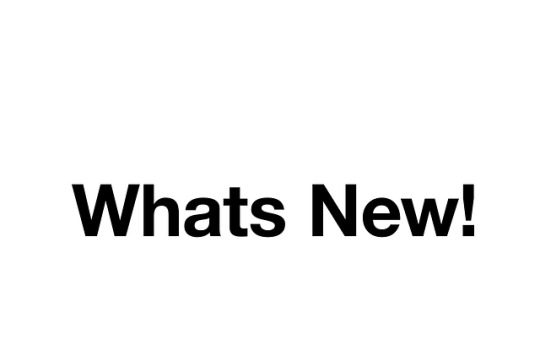

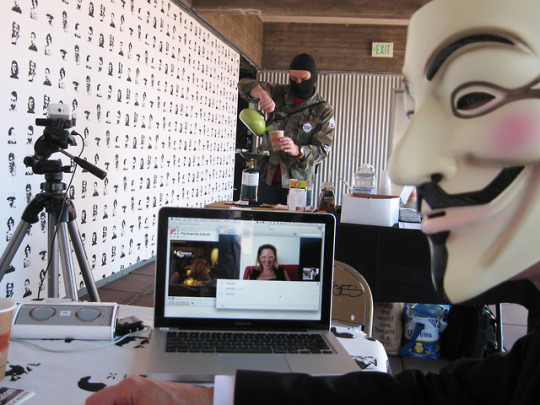
AMY BERK (MFA 1995) CITY STUDIOS
Amy Berk (MFA 1995) took over as Director of City Studio in March 2018. She has been growing the program that offers underserved youth high-quality arts education in their own neighborhoods.
She has also been embarking on several new initiatives directed towards professional development of the City Studio Professional Teaching Artists and Teaching Assistants, City Studio youth, and City Studio community partners, enhancing its successful multi-generational model for mentoring and arts education.
With this initiative, current SFAI students are employed in the program along with recent (and not so recent) SFAI alums. She also teaches SFAI's City as Studio Practicum course that offers real world experience as well as arts education pedagogies to SFAI students.
Last spring, she was interviewed for the podcast "Teaching in the Arts:"
If anyone would like to teach, volunteer or learn more about the program to contact Amy at [email protected].
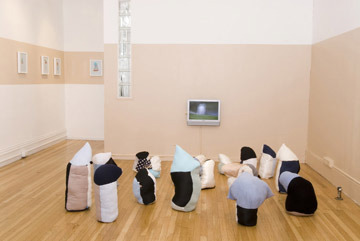
Images courtesy of Amy Berk
IRENE CHAN (MFA 1997) CH’AN PRESS
Irene Chan is a multidisciplinary artist who works conceptually in print media, papermaking, installation, storytelling performance, and book arts. Her books and works on paper have been exhibited internationally and held in 70 public collections including the Walker Art Center, The Fine Arts Museums of San Francisco, Tate Modern, Victoria & Albert Museum, and British Library in London.
Chan established Ch’An (ch’ ahn) Press through which she has self-published prints and 34 limited-edition artist books to date. She is the recipient of grants and awards from the National Endowment for the Arts, New York Arts Council, Maryland State Arts Council, Washington D.C. Commission of the Arts and Humanities, of fellowships to 22 artist residencies, and has exhibited and performed in 62 venues in the last ten years.
Irene Chan holds an M.F.A. with honors from the San Francisco Art Institute and a degree in architecture (BArch) with a Minor in English from California Polytechnic State University, San Luis Obispo. Besides running her own press and studio, she is also an Associate Professor of Visual Arts (Founder and Head of Print Media) and Affiliate Faculty of Asian Studies at the University of Maryland, Baltimore County, U.S.A.
To learn more about the artist please click here.
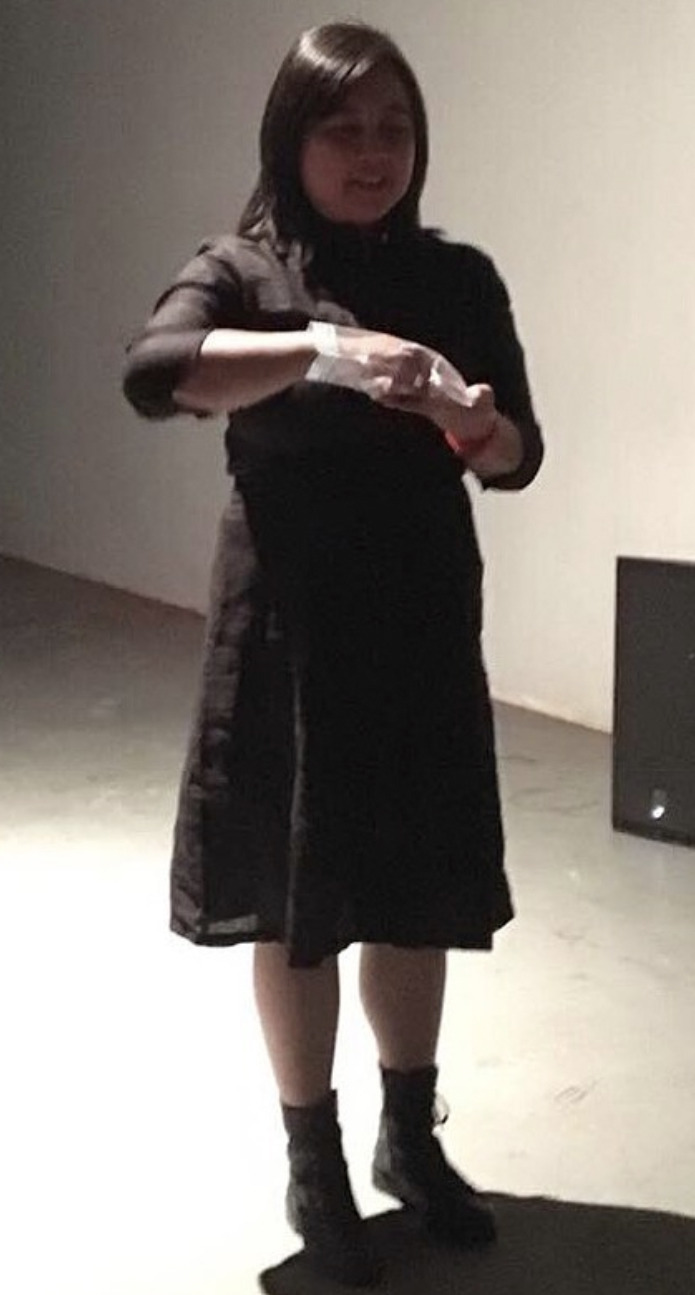

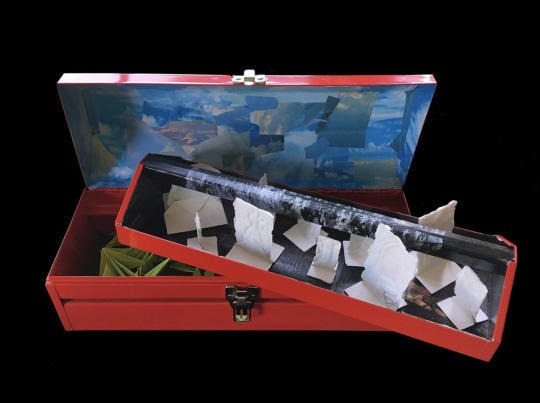

Images courtesy of Irene Chan
JANNEKE VAN DER PUTTEN (BFA 2008)
“On 17 – 28 September 2019 I will give a workshop, open studio exhibition and performance at Salon of Colombian Artists (45SNA), Espacio de Interferencia, Espacio Odeón, CARRERA 5 #12C - 73, Bogotá (CO).” Curated by Ana Ruiz Valencia. More info about the workshop here.
Janneke van der Putten (Amsterdam, 1985) is a visual artist and performer based in Rotterdam, The Netherlands. Her practice involves experiences of listening, performances, sound and video, documentations in image, text and textile, workshops, music projects, and creating platforms for cultural exchange. Her voice is her main tool, guiding her through physical and sonic explorations in different landscapes. Engaging with specific sites and local contexts, and through her personal experiences, she investigates (human) responses to her surroundings, and their relation to natural phenomena and transitions, such as the sunrise.
For more information about the artist please click here.
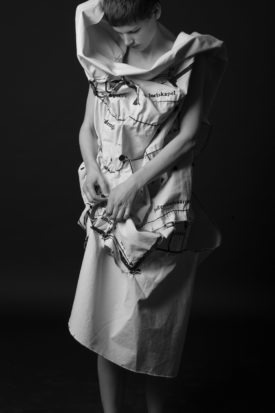
Image courtesy of JannekeVan Der putten
PATRICIA ARAUJO (BFA 2005)
Patricia Araujo was born in Miami, Fl, the daughter of Colombian parents. Her father was an architect at Walt Disney and during his last years he assisted with the development of Epcot Center. Patricia grew up in Bogota, Colombia and since childhood, she was enchanted by architecture and form. After completing high school in Bogota, Araujo moved to Northern California to pursue her college education. She studied architecture, painting, and photography. In 2005 she obtained her B.F.A in Painting, from the San Francisco Art Institute.
For over a decade, Patricia Araujo has painted the facades of both iconic city landmarks and downtown buildings. Her paintings depict praiseworthy examples of San Francisco architecture, some utilitarian and others grandly ornamental. She's been bewildered by the architecture of cities she's lived and traveled to and by imaginary places.
From 2008 to 2010, she dedicated a series of works relating to Tomorrowland and as of most recent she's devoted to painting the architectural wonders and forgotten treasures of "GGIE" (the Golden Gate International Exposition of 1939 at Treasure Island) - the last World's Fair of San Francisco Bay. Her interest in researching the urban landscape continues to grow, addressing the evolution and decay within a city.
Araujo continues to deepen her conceptual themes on architecture, place and change in the urban landscape. She has been exhibiting in San Francisco since 1998. Some of the venues exhibited include: Arc Gallery, Arttitud, Bayview Opera House, HANG ART, Roll Up Gallery, STUDIO Gallery, the Old Emporium, Pen Club Gallery in Budapest and most recent at the Old Mint with Treasure Island Museum.
In 2008, she published her first book, entitled ”SOMA SEEN”. Her work has been written about in the San Francisco Chronicle, ARTslant, 7x7 SF, Huffington Post, Examiner, Beyondchron, and the San Francisco Bay Guardian. She lives and works in the San Francisco Bay Area.
To view her complete portfolio and resume online please visit: Here.
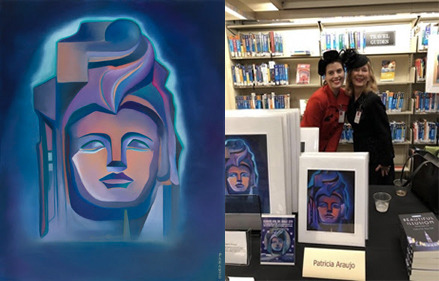
Images courtesy of Patricia Araujo
PHILIP PERKIS (BFA, 1962)
Philip Perkis (BFA, 1962) has published his fifth monograph, Mexico, Anmoc Press, Seoul, 2019, distributed by Photo-eye books, Santa Fe. Link: : Click Here
This Publication accompanied Mexico, Perkis's solo exhibition of gelatin silver prints, at Ryugaheon Gallery, Seoul, in 2019. Most of these works were also shown in a two-person exhibition, Philip Perkis and José Hernandez- Claire, at the Jalisco Government Palace, Guadalajara, Mexico, in 2017.
In 2019, Perkis's photographs were also shown in Watershed: Contemporary Landscape Photography, Westmont Ridley-Tree Museum of Art, Santa Barbara, CA, an exhibition that originated at the Telfair Museum of Art, Savannah, in 2017.
Preceding publications include: In a Box Upon the Sea, 2015; Twenty Days, Twenty Comments, 2014; The Sadness of Men, 2008; Teaching Photography, Notes Assembled, 2001—with additional editions in English, 2005, Korean, 2005, and Italian, 2017; and Warwick Mountain Series, 1978.
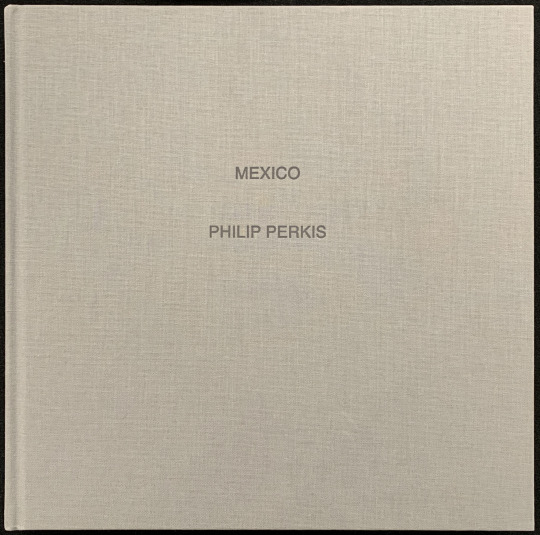
Image courtesy of Philip Perkis
SETH LOWER (MFA 2008)
Units contains photographs taken from 1994–2017. The images depict a variety of everyday materials and situations, many seen in sets, parts, or multiples. Within such scenes, Lower seeks out a kind of integrity (or lack thereof): standards of measurement, materiality, vague questions about the boundaries of entities and experience.
A sign swallowed by tree bark, a small collection of funnels, a stove for sale in the sunshine. Where does one unit end and the other begin? It is certainly possible to be part of the whole and at the same time separate, existing with a foot in both worlds, but does this say anything about the units themselves, or only the way we define them?
Graham Harman writes that such pieces are ‘terminal points, closed-off neighborhoods that retain their local identity despite the broader systems into which they are partly absorbed’.
Click here to learn more about the artist.

Image courtesy of Seth Lower
TOM LAUGHLIN (MFA 2013) OPENING RECEPTION FOR SIGNAL
You are welcome to join on September 21 for the opening for Signal,a public art piece by Tom Laughlin on Treasure Island.
The event begins with a champagne reception at 4 pm, followed by a dedication ceremony at 5 pm.
Please RSVP through Eventbrite page. Directions are available HERE or at SignalSF.com.
To learn more about the artist please click here.

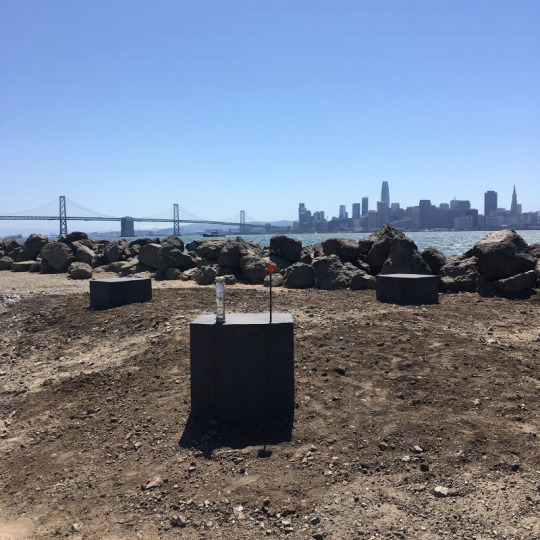


Images courtesy of Tom Laughlin
MARK TOSCANO REMAINS TO BE SEEN
A mystery program of archival experimental film with Mark Toscano.
Thursday, September 26 | 8 PM Doors 7:30; $5 admission.
Mark Toscano is a filmmaker, curator, and film preservationist based in Los Angeles. Since 2003, he has worked at the Academy Film Archive, where he specializes in the curation, conservation, and preservation of artists' films. He works with the collections of over 100 filmmakers, and has overseen the conservation and preservation of hundreds of films, including work by Stan Brakhage, Barbara Hammer, Chick Strand, Tacita Dean, Penelope Spheeris, the Whitney brothers, Gus Van Sant, Pat O'Neill, Suzan Pitt, and many others.
He has curated and presented programs at numerous venues, including MoMA, Arsenal, Eye Filmmuseum, Tate Modern, and festivals in Rotterdam, London, Oberhausen, Zagreb, Bangalore, and elsewhere.
He is a programmer with Los Angeles Filmforum, and has lectured at various universities on experimental film and archiving, as well as teaching the History of Experimental Animation at CalArts.
Please click here for more information about the artist.
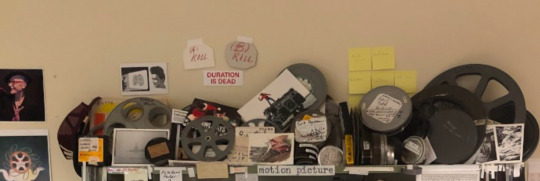
Image courtesy of Marc Toscano
NINA ELDER (MFA 2009) WHAT ENDURES
Closing September 15. There is one week left to see this exhibit!
It has been a stellar experience to work with the crew at SITE and make this dream a reality! The show is a retrospective of my drawings from the last decade.
Nina Elder is an artist, adventurer, and arts administrator. Her work focuses on changing cultures and ecologies. Through extensive travel and research, resulting in meticulous drawings and interdisciplinary creative projects, Nina promotes curiosity, exploration, and a collective sense of stewardship.
Nina advocates for collaboration, often fostering relationships between institutions, artists, scientists and diverse communities. She is the co-founder of the Wheelhouse Institute, a women's climate leadership initiative. Nina lectures as a visiting artist/scholar at universities, develops publicly engaged programs, and consults with organizations that seek to grow through interdisciplinary programing.
Nina's art work is widely exhibited and collected and has been featured in Art in America, VICE Magazine, and on PBS. Her research has been supported by the Andy Warhol Foundation, the Rauschenburg Foundation award for Arts & Activism, the Pollock Krasner Foundation, and the Mellon Foundation.
She is currently an Art + Environment Research Fellow at the Nevada Museum of Art, a Polar Lab Research Fellow at the Anchorage Museum, and a Researcher in Residence in the Art and Ecology Program at the University of New Mexico.
Please click here for more information about the artist.


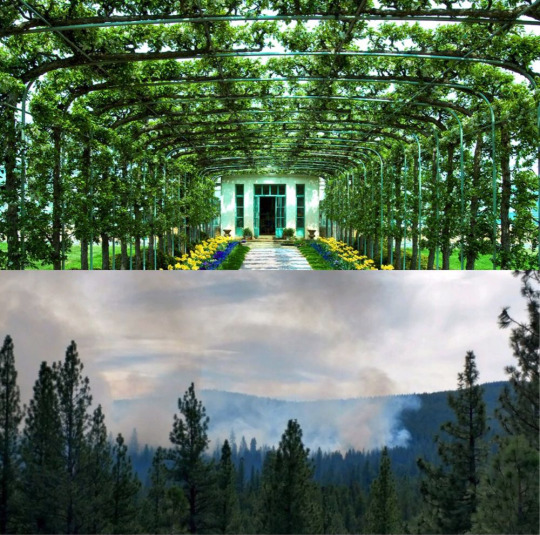
Images courtesy of Nina Elder
DICKY BAHTO (BFA 2004)
Dicky Bahto lives in Los Angeles. He has exhibited work utilizing still and motion picture photography, sound, and performance at a variety of museums, galleries, microcinemas, film festivals, conferences, alternative spaces, and scenic locations spanning the Northern Hemisphere, including commissions from Monday Evening Concerts and The Huntington.
As a member of the EPFC Co-op, he is a corecipient of an inaugural Artist Project Grant from the Mike Kelley Foundation for the Arts. His interest in music has led him to both collaborate with and perform works by various composers, including Casey Anderson, Ashley Bellouin, Luciano Chessa, Carmina Escobar, Corey Fogel, Julia Holter, Sepand Shahab, Mark So, Laura Steenberge, and Tashi Wada. In addition to creating album art for some of the above musicians, he has made several music videos for Julia Holter, and his portraits of artists including Ashley Bellouin, Sarah Davachi, Julia Holter, Laida Lertxundi, and Tashi Wada have been printed in The New York Times, Bomb, Vanity Fair España, The Wire, and MOJO, among other publications.
He has curated programs of experimental film and video, performance, and music, including regular programming at the Echo Park Film Center, as well as programs at REDCAT and the wulf. in Los Angeles, Artist’s Television Access and San Francisco Art Institute in San Francisco, Exploded View in Tuscon, and Yale University in New Haven.
He received a BFA from the San Francisco Art Institute in 2004 and an MFA from the University of California, Riverside in 2017, and has himself taught at the Echo Park Film Center, Museum of
Contemporary Art Los Angeles, Otis College of Art and Design, and the University of California,
Riverside.
Please click here to learn more about the artist.
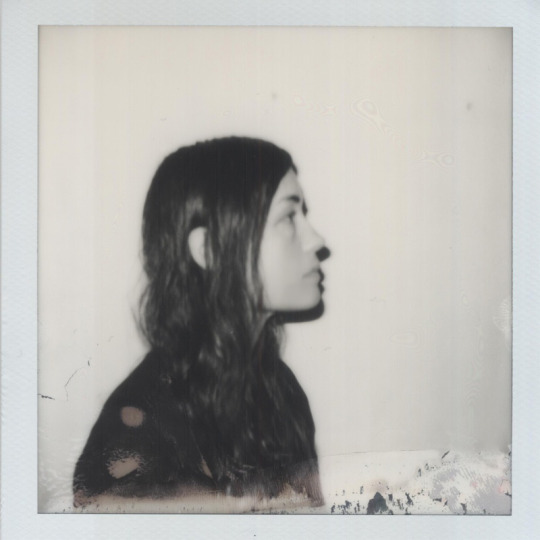

Images courtesy of Dicky Bahto
0 notes